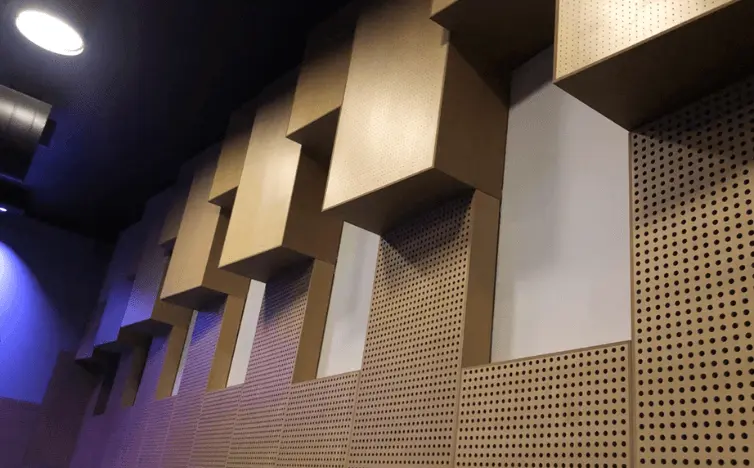Acoustic panels are essential for managing sound in spaces like offices, recording studios, and classrooms. A key factor in their effectiveness is their sound absorption rating. This article dives into what these ratings mean, how they’re measured, and their importance in soundproofing and acoustic design.
What Are Sound Absorption Ratings?
Sound absorption ratings measure how well a material absorbs sound energy instead of reflecting it. These ratings are typically expressed as a Noise Reduction Coefficient (NRC) or a Sound Absorption Average (SAA).
- Noise Reduction Coefficient (NRC): A scale from 0 to 1, where 0 indicates total reflection and 1 means total absorption.
- Sound Absorption Average (SAA): Similar to NRC but measured using more frequency points for accuracy.
How Are Sound Absorption Ratings Measured?
The measurement process involves placing the material in a controlled environment and testing its absorption at various sound frequencies.

- Low Frequencies (e.g., bass): More challenging to absorb, requiring thicker or specialized panels.
- Mid and High Frequencies: Easier to manage with standard acoustic panels.
Ratings are determined in an acoustical testing chamber and certified by standards such as ASTM or ISO.
See Also: Effective HVAC Solutions for Acoustic Comfort
Why Do Sound Absorption Ratings Matter?
Sound absorption ratings are crucial for selecting the right acoustic panels for a space.
- Improved Speech Clarity: In offices or classrooms, panels with high absorption ratings reduce echo and improve communication.
- Enhanced Audio Quality: Studios and theaters benefit from balanced acoustics that elevate sound production.
- Noise Reduction: For noisy environments like restaurants, absorbing sound enhances comfort.
Choosing the Right Acoustic Panels Based on Ratings
When selecting acoustic panels, consider the specific needs of your space:
- For Offices: NRC between 0.7 and 0.9 helps reduce chatter and echo.
- For Recording Studios: Higher NRC values (above 0.9) ensure precise sound capture.
- For Public Spaces: Moderate ratings (around 0.6) balance noise control with design aesthetics.
See Also: Why Wooden Acoustic Panels Are Gaining Popularity
Common Misconceptions About Sound Absorption Ratings
- “Higher Ratings Are Always Better”: Not necessarily. Over-absorption can make a space feel unnatural.
- “Sound Absorption Equals Soundproofing”: Absorption minimizes reflections, while soundproofing blocks noise transmission.
How to Optimize Sound Absorption in Your Space
To get the most out of acoustic panels:
- Strategic Placement: Install panels on walls or ceilings where sound reflection is highest.
- Combine Materials: Use panels with varying NRC ratings for comprehensive coverage.
- Test and Adjust: Regularly evaluate the acoustics and add more panels as needed.
Call us: Contact DeSound Soundproofing Expert in Dubai For Soundproofing: +971 56 231 4204
Conclusion
Understanding sound absorption ratings is vital for creating acoustically balanced spaces. By knowing how these ratings work and applying them effectively, you can enhance communication, reduce noise, and improve the overall ambiance of any environment.

